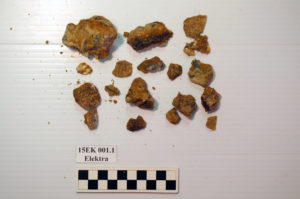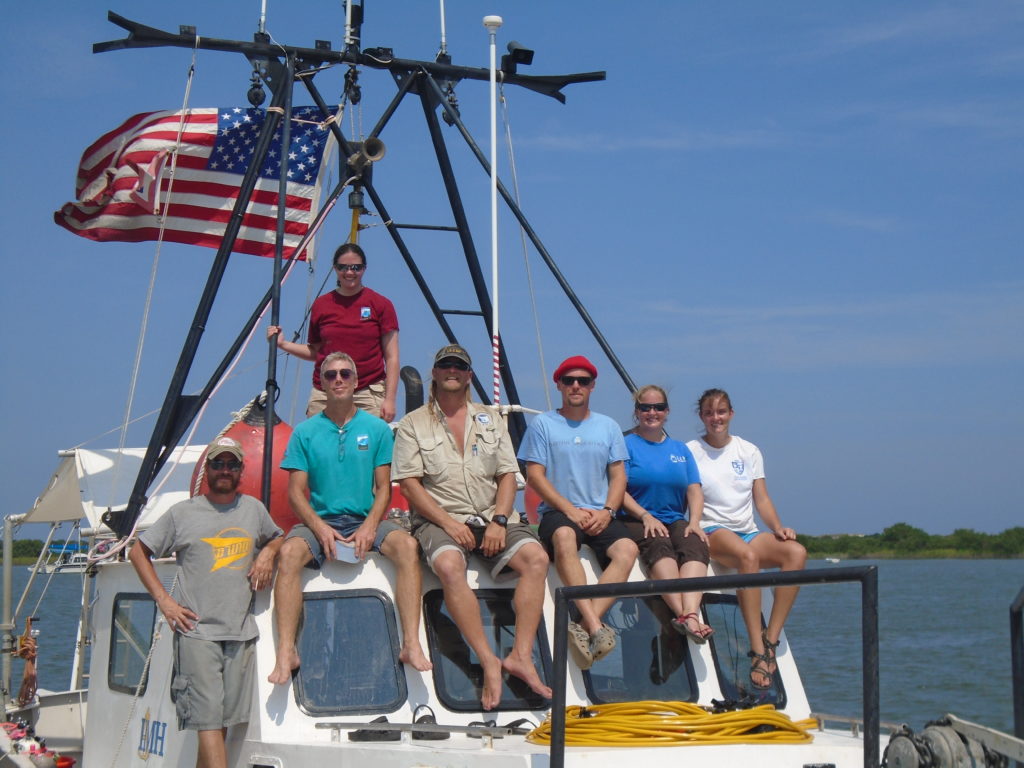As we begin to move into our 2016 field season, we are excited to introduce the results of the 450th Anniversary Shipwreck Survey, that the Lighthouse Archaeological Maritime Program (LAMP) carried out over the 2015 field season. The “450th Anniversary Shipwreck Survey” was a project carried out as part of LAMP’s multi-year First Coast Maritime Archaeology Project, which has been ongoing since 2007. The 450th Anniversary Shipwreck Survey, named in honor of St. Augustine’s 450th anniversary which occurred in 2015, was funded by a State of Florida, Division of Historical Resources Small Matching Grant (No. S1604).
Previous Posts:
- Welcome to the 450th Anniversary Shipwreck Survey
- Measuring the Invisible
- Going in Blind
- Nine Foot Under Site
The magnetic target known as Elektra was the smallest magnetic target chosen for further investigation during the 450th Anniversary Shipwreck Survey. Archaeologists hoped that the small nature of the target might represent an older vessel, hypothesizing that an older wreck would have less iron remaining due to degradation over time, and would therefore have a smaller magnetic signature than more recent shipwrecks. A series of target testing dives revealed the source of the Elektra target.
Read on to see volunteer diver Kira Sund’s description of identifying Elektra!
Identifying Elektra
By Kira Sund

The Elektra magnetic contour was significantly smaller than the others chosen for diver investigation during the 450th Anniversary Shipwreck Survey. It is shown here overlaid with the test probes placed on the target by divers.
You are diving down on a potential new site; magnetometry readings indicated there was the potential for a shipwreck here, so it is time to set up a sample unit to investigate further. As you get ready to set the screw anchor to establish a fixed point to work from, your hand brushes up against a rough object.
You are momentarily startled; everything else around is sand or shells, so what is this strange item?
Leaning in closer you can see the outline emerge from the cloudy green fog; it looks somewhat like a concretion, the concrete like mixture of artifacts covered by shells and sand. Could it be that there is a shipwreck right on the surface?
This was the question encountered on one of the potential new sites surveyed.
The initial investigation revealed a mysterious object on the surface, and secondary dives reinforced the hope that there might indeed be a shipwreck on the surface of the ocean floor. However, a closer look brought doubt; it had some flat, even sides to it, not a typical feature of a naturally formed concretion.
Along with the even sides, there was what appeared to be a corner where two of the sides met. This could be an indication that what initially appeared to be concretion might in actuality be merely a large broken block of concrete.
It is not unreasonable to find large blocks of concrete on the sea bed; it can proved a good anchoring point for fishing trips, and, if lost, no real value is lost with it. As for the metal readings picked up by the magnetometer, concrete frequently contains pieces of re-bar which form the basic framework to support and reinforce the concrete when it is poured. It could very well be this re-bar that was found in the survey.

Divers took a small sample of the large object discovered at the Elektra target, confirming that it was in fact a large block of concrete.
A final investigatory dive then took place to test this hypothesis; a diver descended with a metal detector to get a better idea of the exact source of the metallic readings.
By finding where in the object the metal resides, a good idea of the object’s nature can be determined. This final examination found that most likely this was just concrete and there was no shipwreck present.
This was, of course, disappointing, but it was only one out of a series of potential shipwrecks.
Who knows what might lie at the next site surveyed?
Sometimes it happens, what at first seems like it might be an amazing find turns out to be nothing. It is the nature of the job. It just means that when you do find something incredible it is all the more exciting. It isn’t discouraging; if anything it leaves you more driven than before, as you have had just a taste of what might have been and what might yet be.


